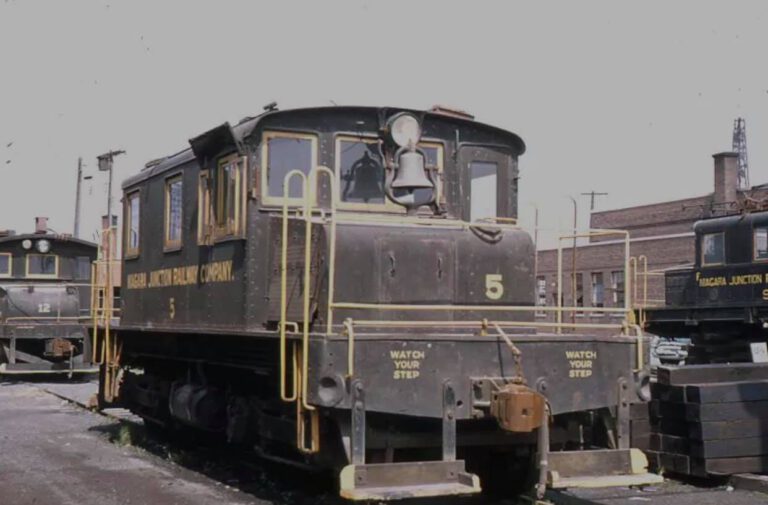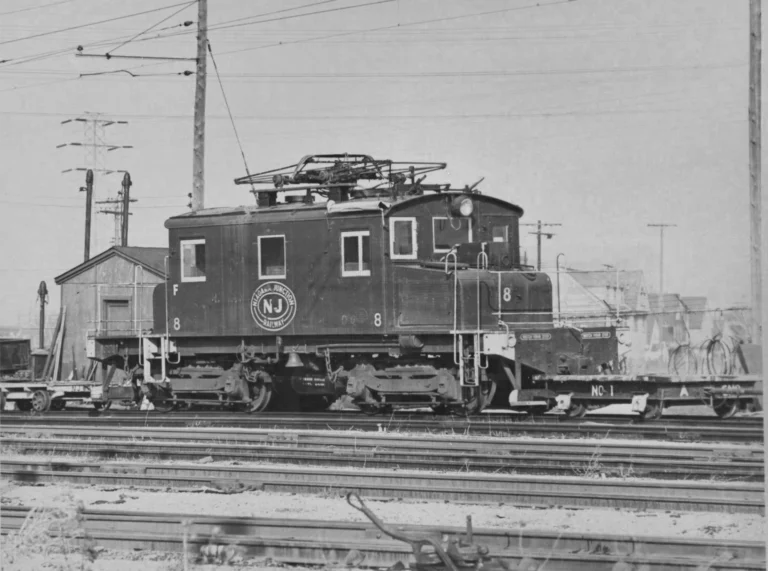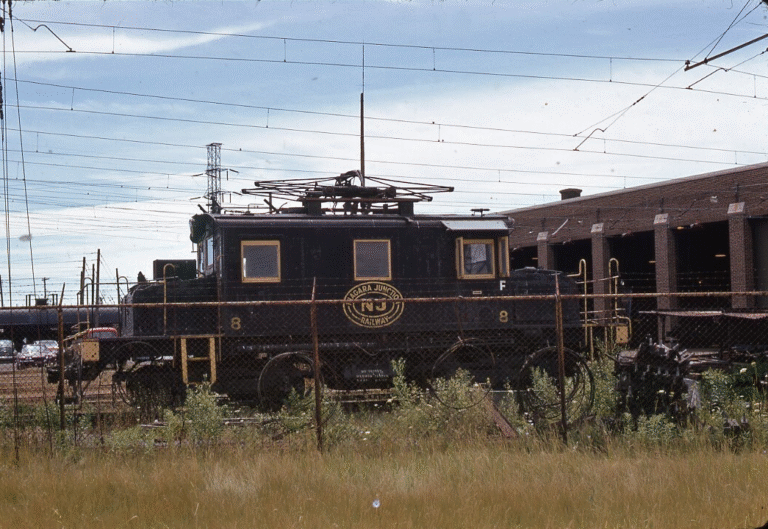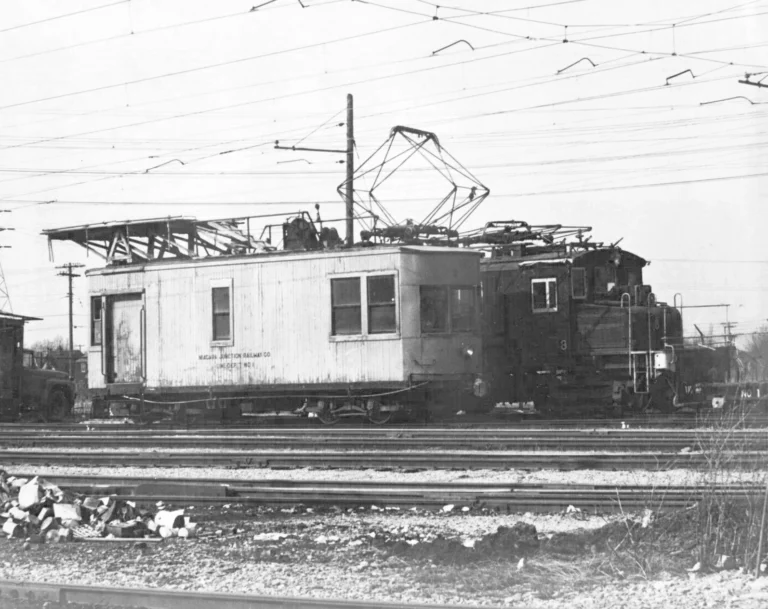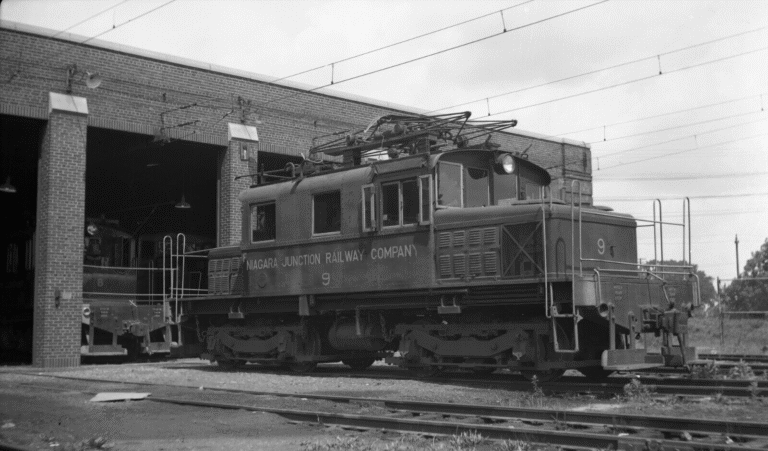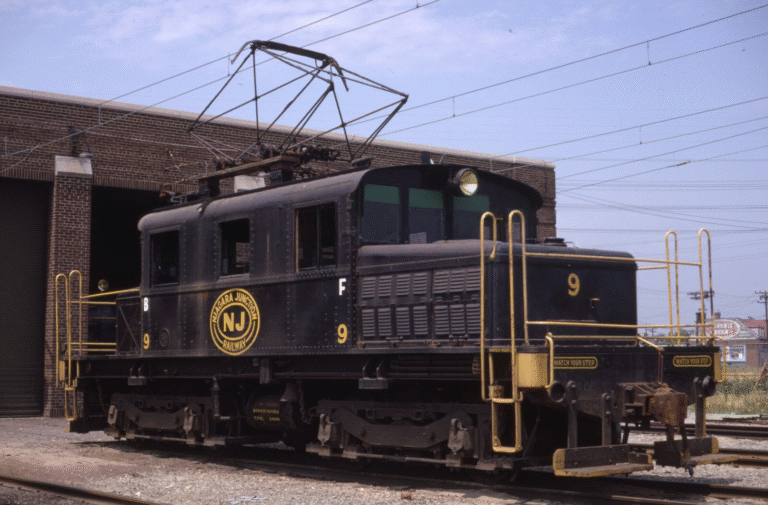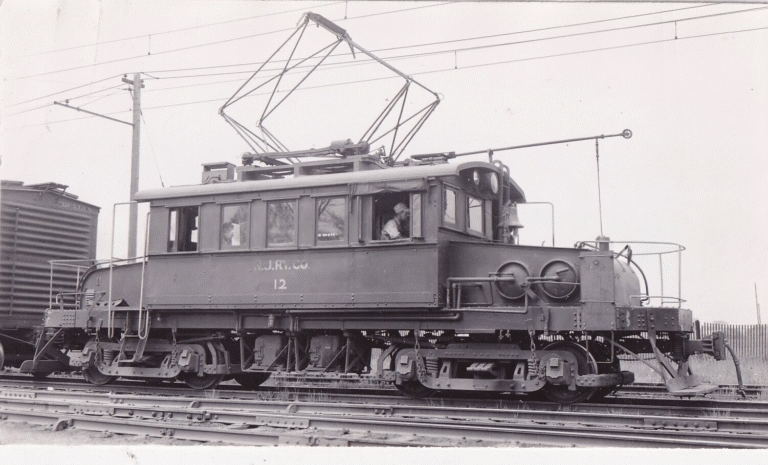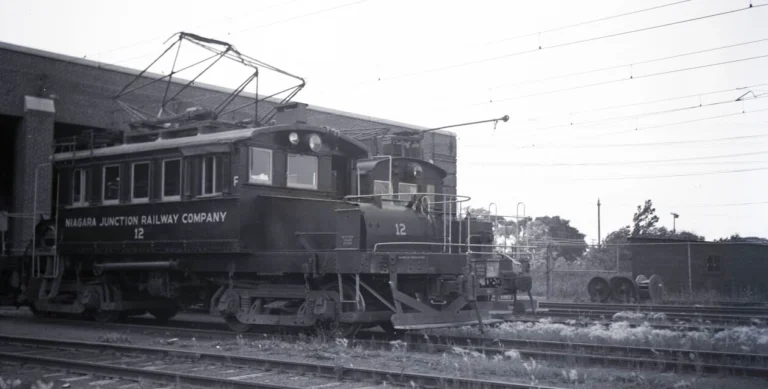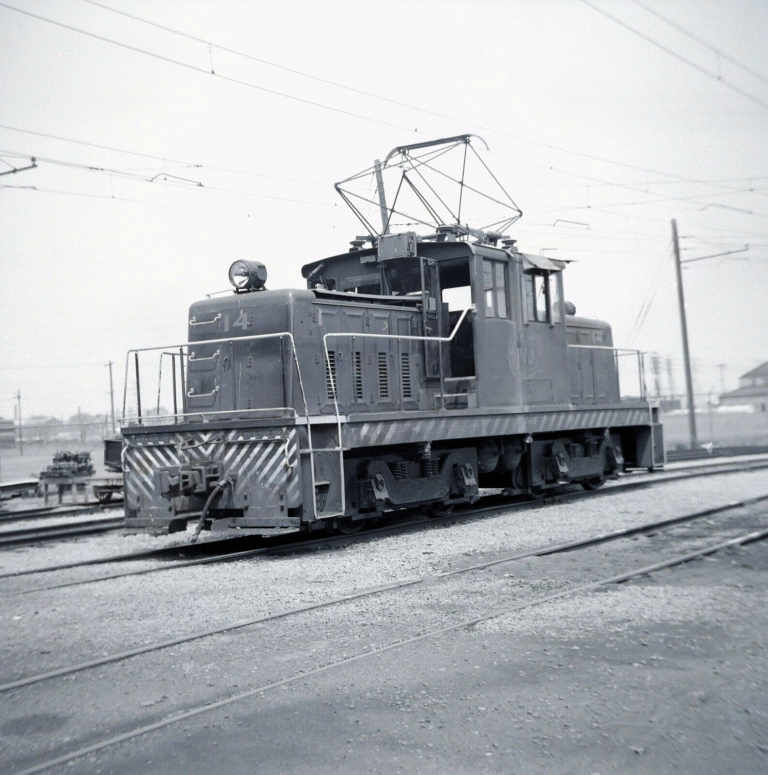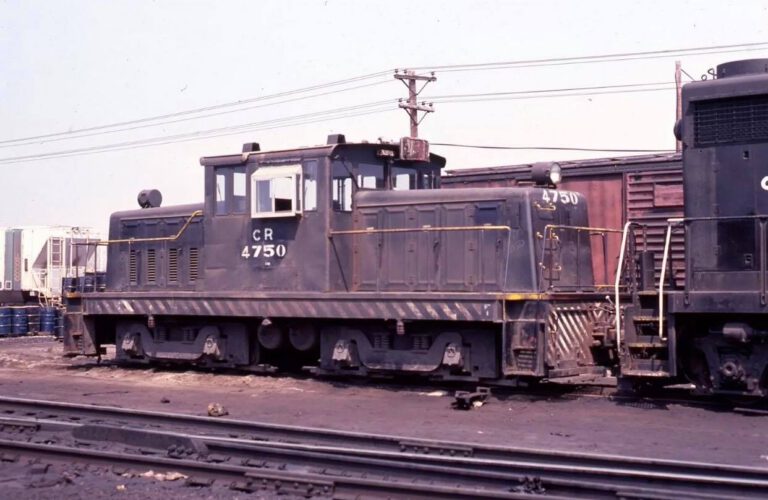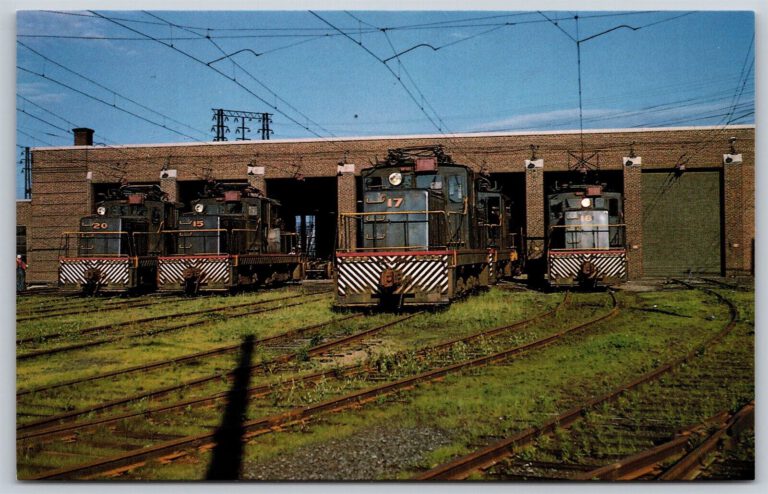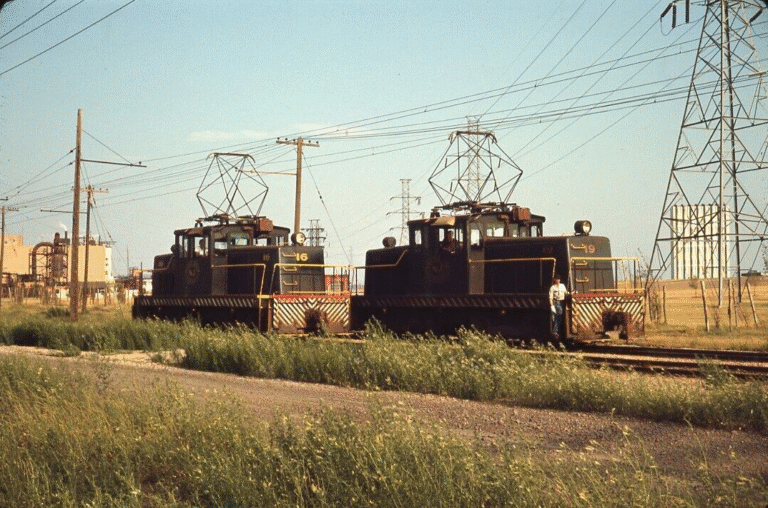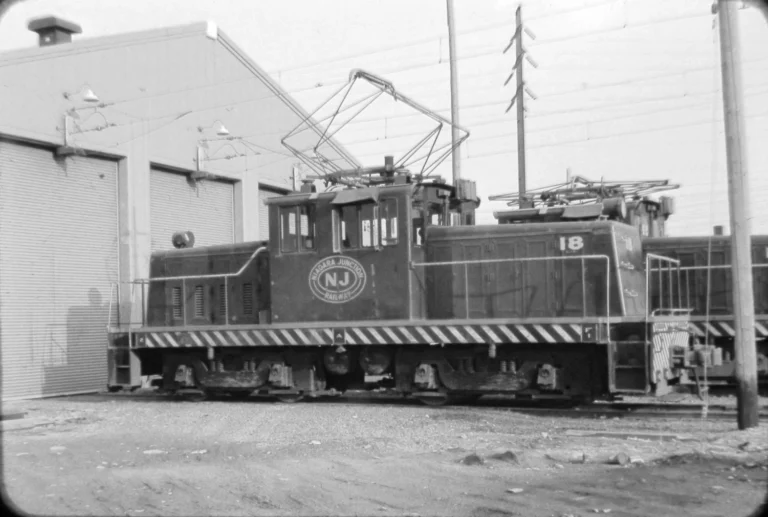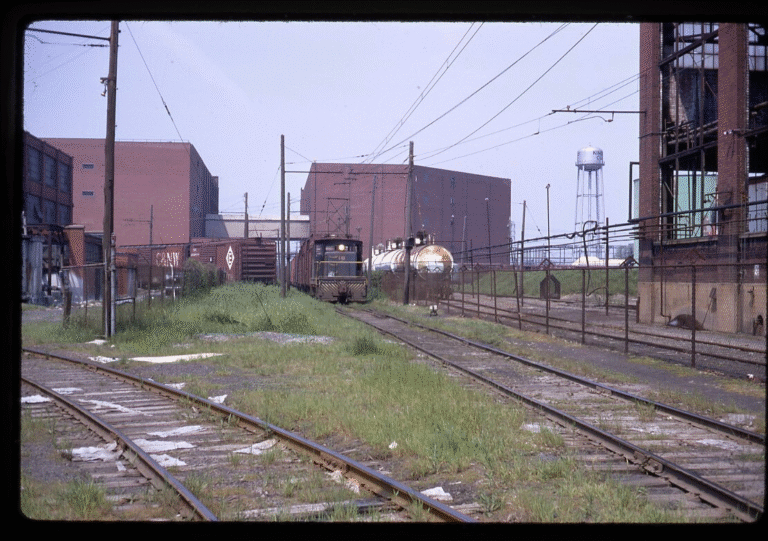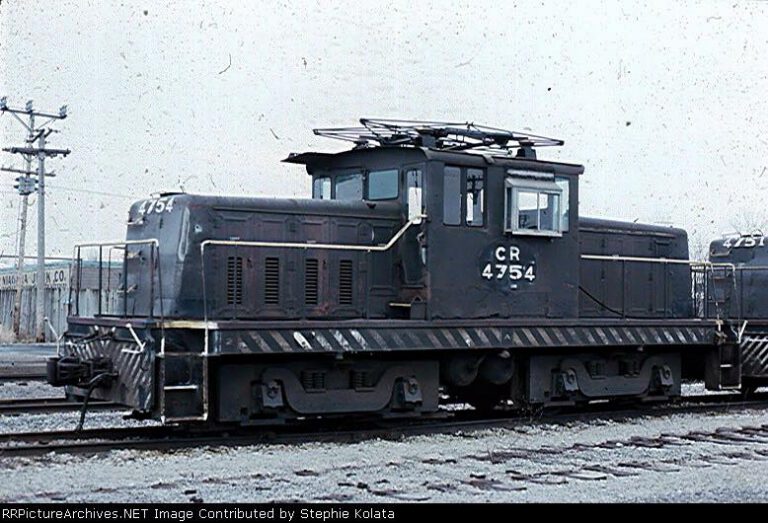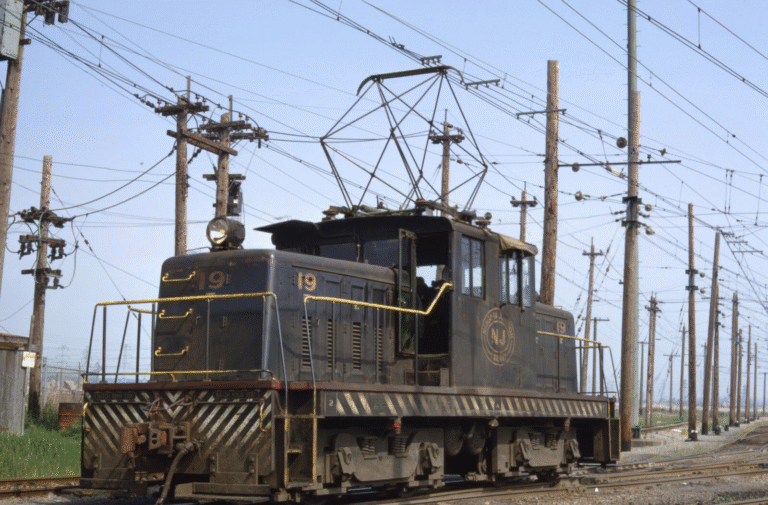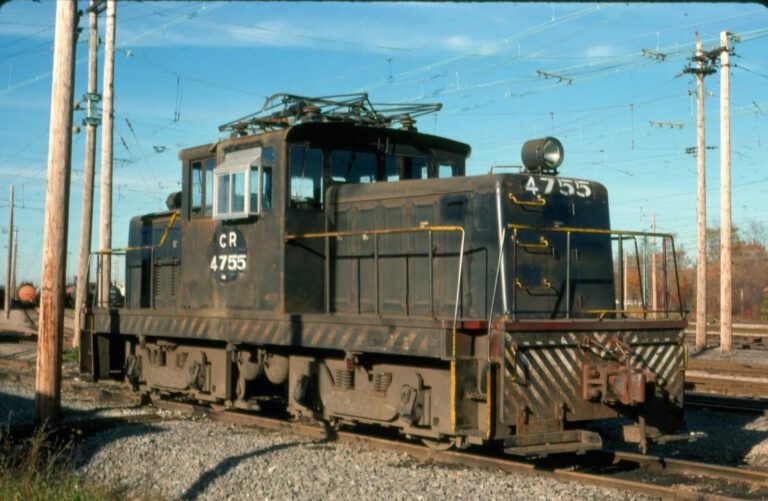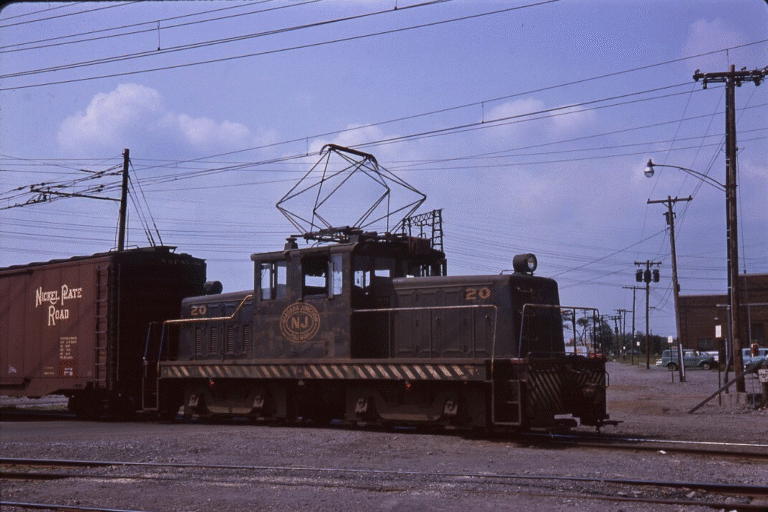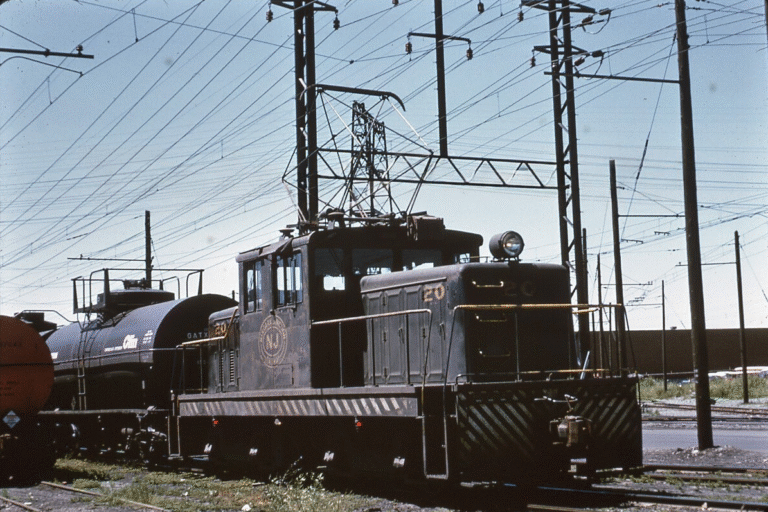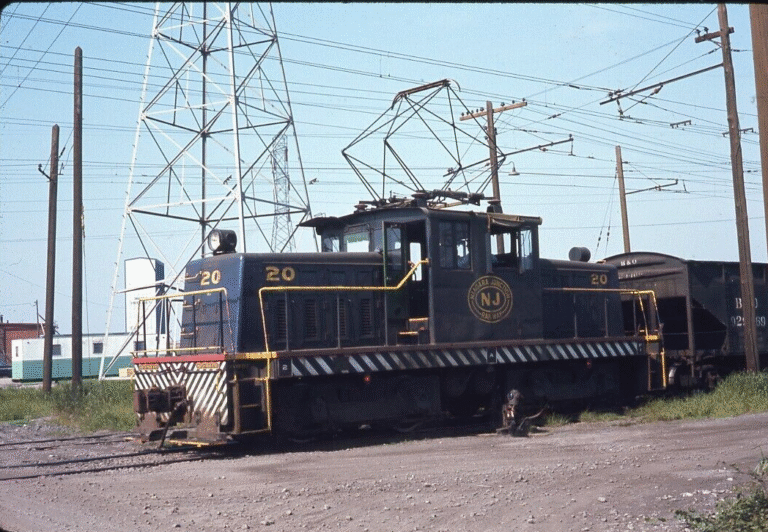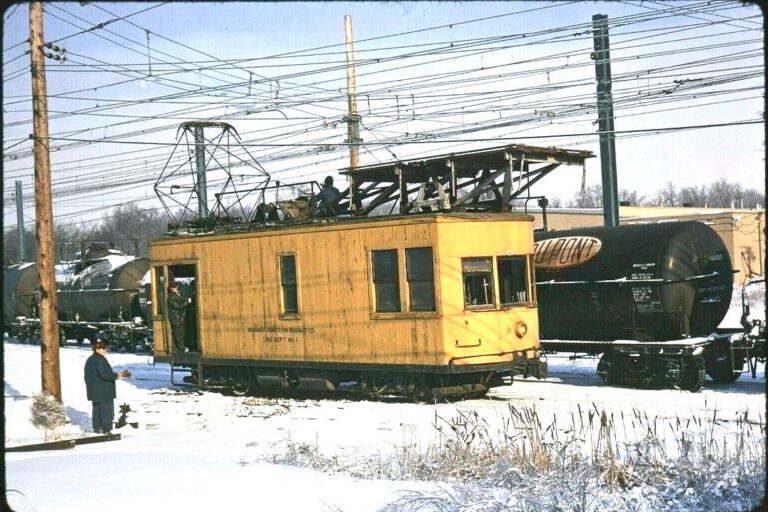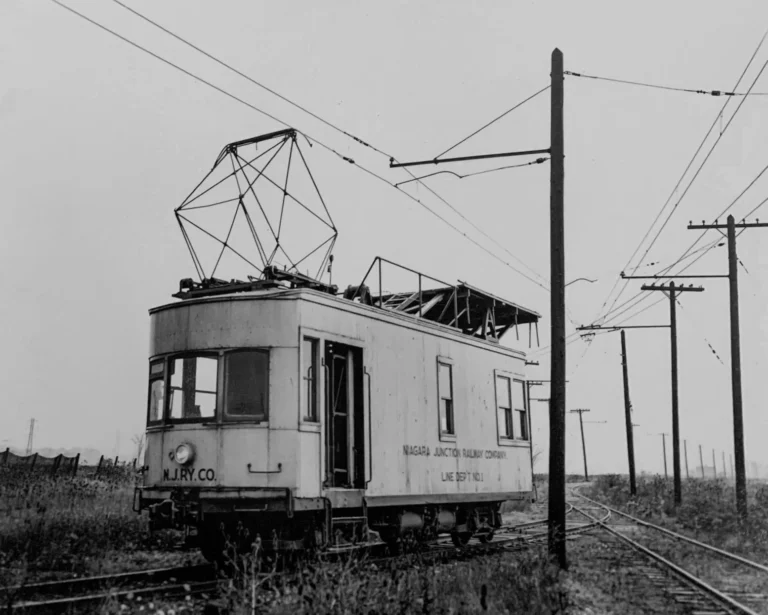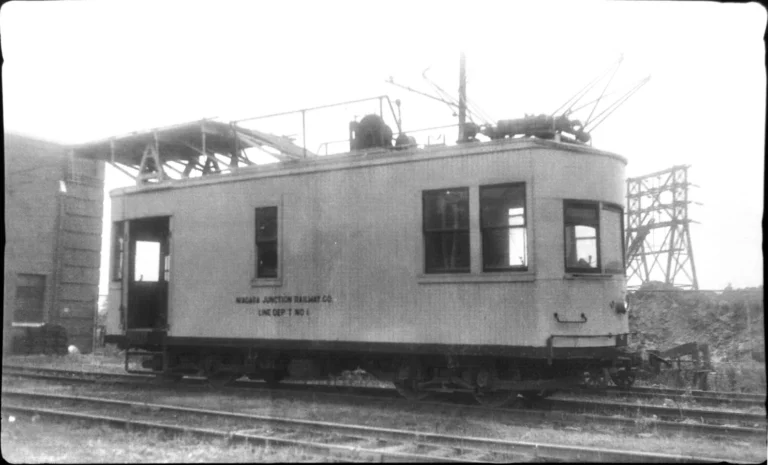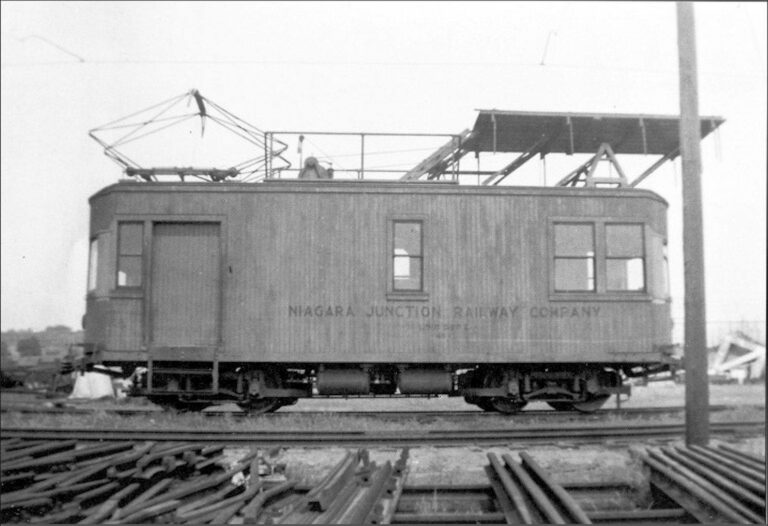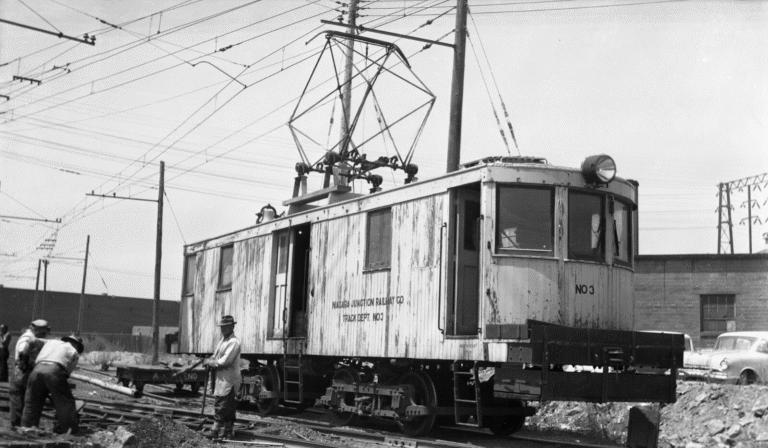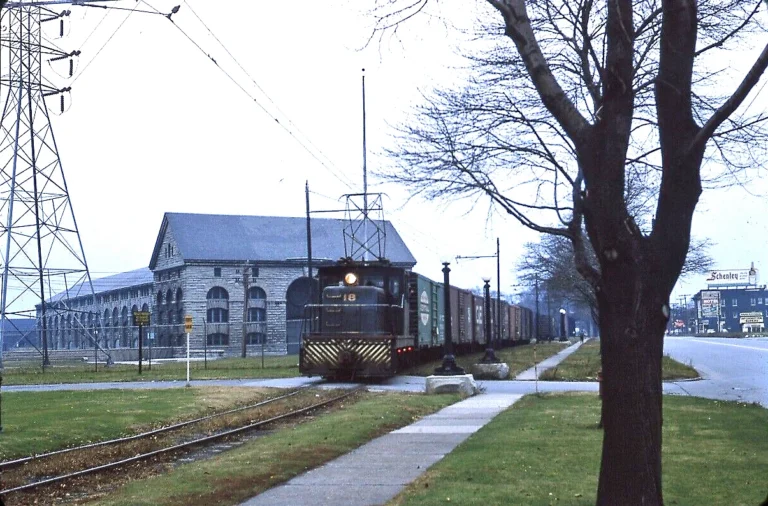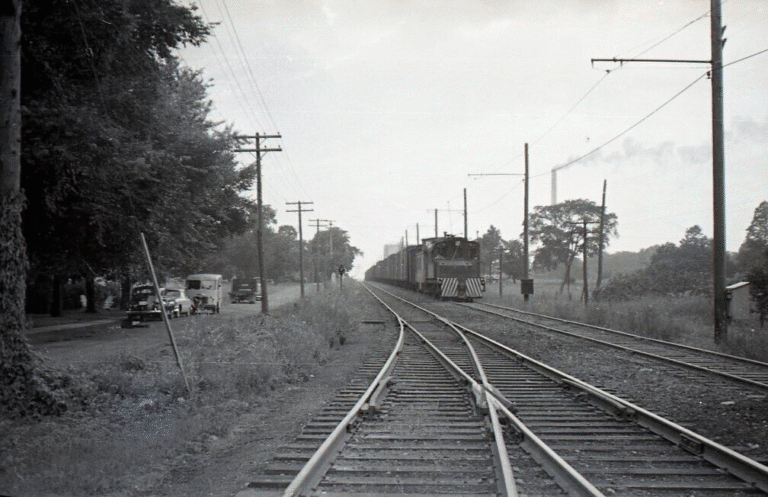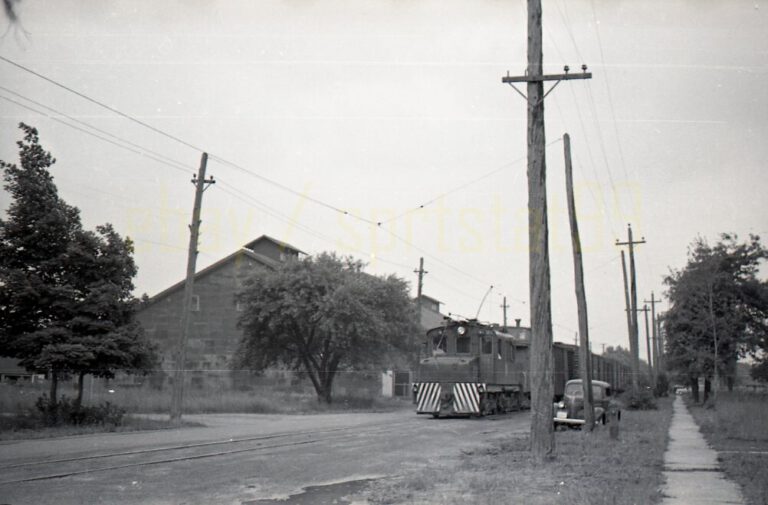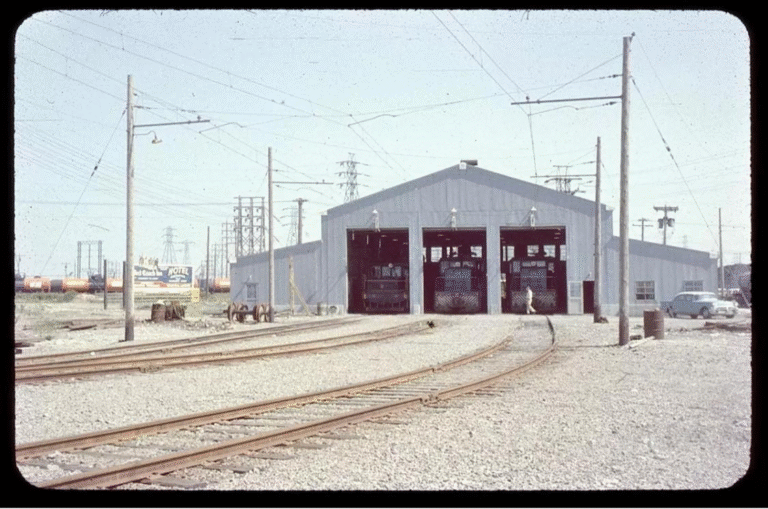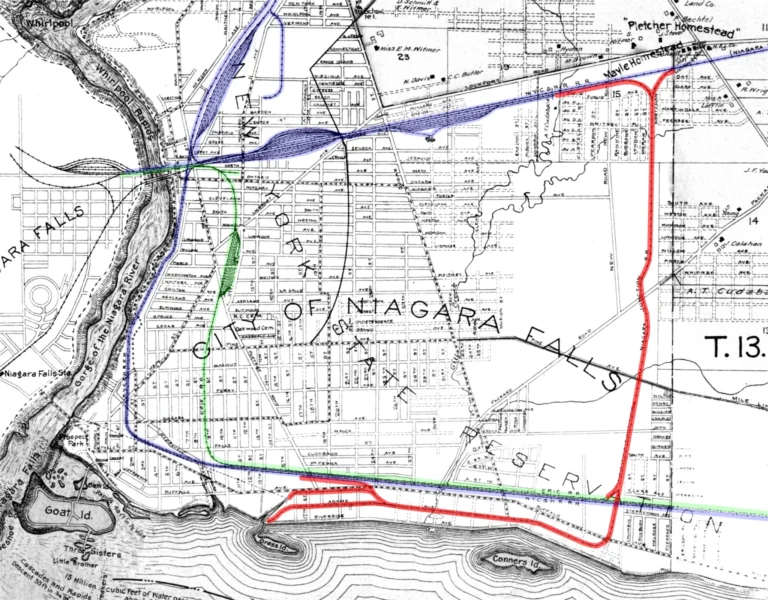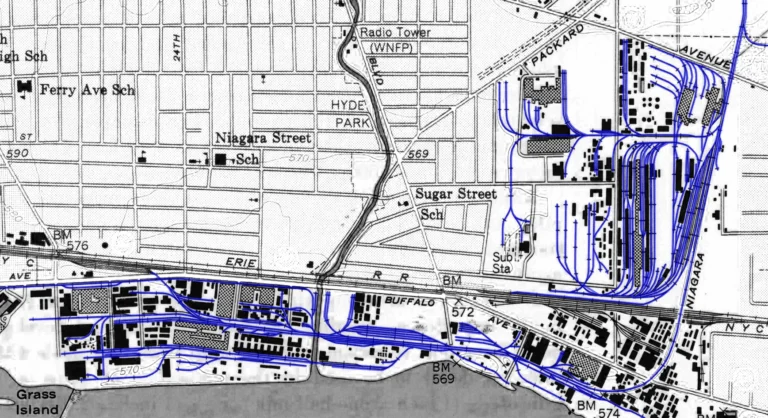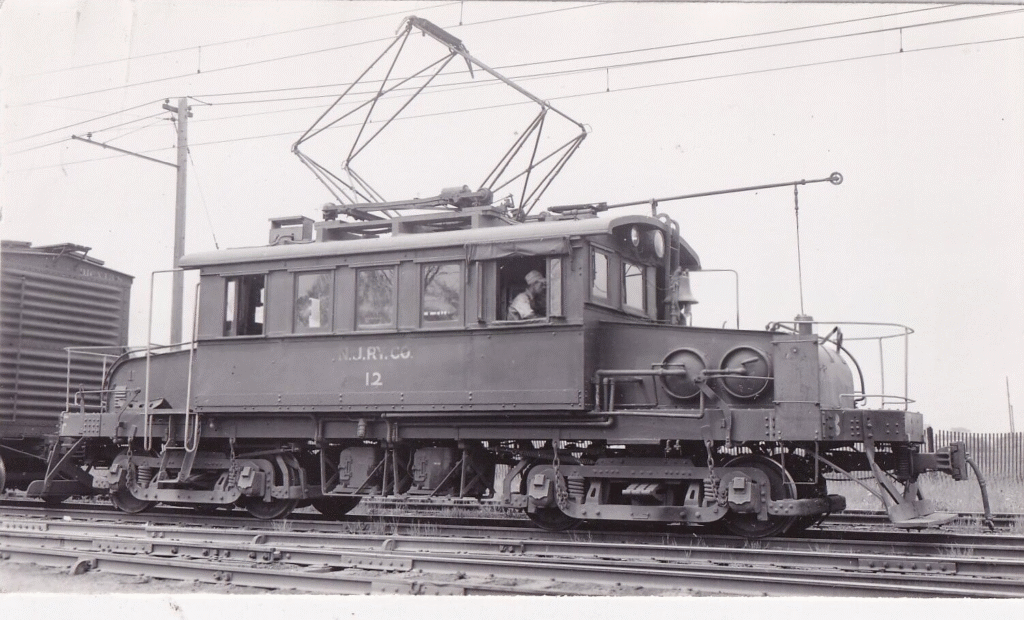
The Niagara Junction Railway was a switching railroad that operated in and around Niagara Falls, NY. It was one of a number of companies owned by the Niagara Falls Power Company, which in 1895 was the first to use the hydraulic power of the Niagara River to generate electricity. The Power Company owned over 1200 acres of land in Niagara Falls, including much of the land along the Niagara Riverfront and large tracts near the eastern edge of the City of Niagara Falls, which it leased out to manufacturing and other companies. An 1897 book about Niagara County described the railroad as follows:
The power company owns about 1,200 acres of land adjoining its central station and the surface canal, which it is designed to lease for industrial purposes. This land has been laid out in streets and blocks and a freight railroad has been built connecting with the lines that enter Niagara Falls. This road was built by the Niagara Junction Railway Company, which is allied with the power company and runs through the whole length of the company’s property, connecting with all the main lines of other railroads entering the city, and docks have been constructed on the river, making connection with the traffic of the great lakes.
In the late 19th and early 20th centuries Niagara Falls was a booming manufacturing area. Electricity becomes more expensive the farther you are from the source due to the added cost of running transmission lines and the energy that is lost along the route. Because of this, Niagara Falls was an ideal location for energy-intensive processes to locate, including manufacturing of chemicals.
The railroad primarily served the chemical plants and factories in Niagara Falls but also transported other items. While the main line of the railroad was just over 5 miles long, by 1925 it also served over 20 miles of sidings. By the middle of the 20th century the company operated over an estimated 40 miles of track. The 1949 topographic map below gives a sense of the tangle of tracks the company had to service.
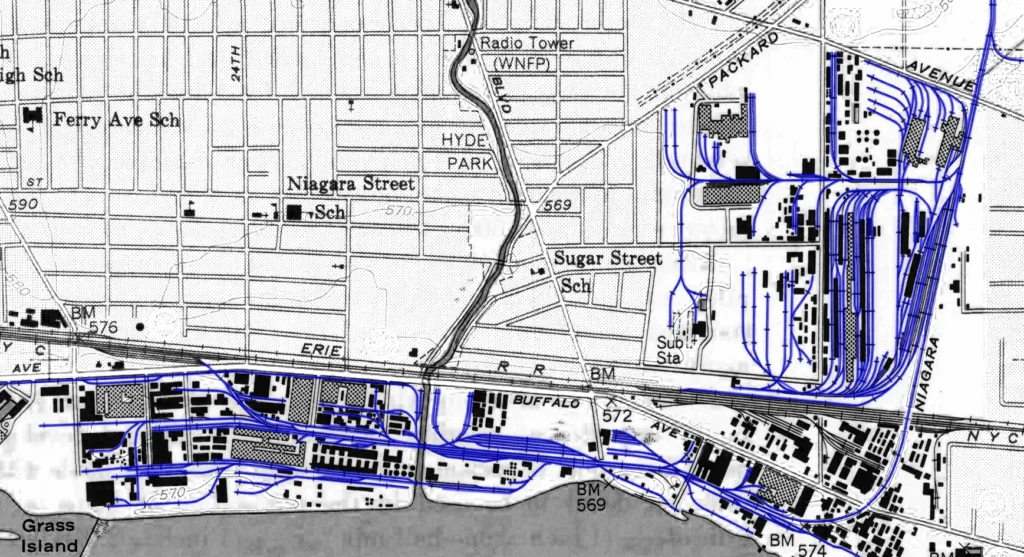
It appears that some of the companies along the line had their own locomotives and did at least some of their own switching. For example, A 1907 article talks about the Union Carbide company having the right to run over the Niagara Junction Railway between 7 o’clock and 8’o’clock in the morning and one of their engineers talking about running a train.
History
The company was formed in May 1892 as a steam railroad. An August 27, 1892 article noted that three miles of track had been laid.
In 1913 it was converted to electric power, which was natural given that it was owned by an electric power company and that electricity had been successfully to power railroads for a number of years.
On March 8, 1916 a huge explosion occurred at the Niagara Electro Chemical Plant in Niagara Falls. A newspaper article in Syracuse claimed that “A string of freight cars standing on siding two blocks away was bowled over while one of the huge electric locomotives of the Niagara Junction Railway was completely demolished.” Newspapers in Niagara Falls do not make any mention of a locomotive being demolished and I can find no record of any of that anyplace else.
In 1948 the railroad was sold to the three railroad company with which it had connections, the Erie Railroad, Lehigh Valley Railroad, and New York Central Railroad.
The railroad lasted as an independent railroad until 1976 when it, like its three owners, was merged into the Consolidated Rail Company, better known as Conrail. The railroad was converted to diesel power in 1979 and portions of it are still used today.
The Engine House
One of the iconic features seen in many photos of the railroad is the single-story brick engine house that was located on the north-east corner of Adams Avenue and Hyde Park Boulevard. Construction of this engine house was begun in March 1938 and completed in September of that year.
Around 1960, access to the brick engine house was blocked by a project to make room for the intakes for the Niagara Power project. A temporary three-stall engine house was erected for use during the time when the main engine house was inaccessible. You can see this engine house in some of the locomotive photos on this site. Following that project, the railroad resumed using the brick engine house.
The engine house still stands and can be seen here.
Trestle Over The Erie and New York Central
Most of the right-of-way was flat, but to cross the existing tracks of the New York Central Niagara Falls Branch and the Erie Railroad Niagara Falls Branch the Niagara Junction had to build a long trestle to carry the railroad over those tracks. It was originally a wood trestle listed in the 1897 report for the company to the New York State Railroad Commissioners as being over 5000 feet long, with a notation that it was almost all filled in. A 1896 news article about the digging of the shafts for a hydroelectric power plant noted that:
The muck from the excavation is loaded into dump cars and carried over the tracks of the Niagara Junction Railway to the wooden trestle of the same road beyond Echota, where it is used to fill in beneath the trestle and make a firm roadbed.
By 1899 the trestle is listed as being only 690 feet long and by 1906 it was down to 375 feet long. It is still standing, but the tracks under it are no longer a through route. If anyone has a photo of the trestle, please send to to me so I can include it here.
Clippings
Locomotives
Mystery Four-Driver Locomotive
From 1893 to 1899 the railroad reported to the New York State Railroad Commissioners that it owned two locomotives with four driving wheels. One of those was #2 purchased in 1893 (see below). I have not been able to find any record of the second one.
The report for June 30, 1898 listed two locomotives but the report for the following year showed only one. The September 1899 “A Train in the River” article talks about the locomotive that went into the Niagara River in August 1899 as being leased. My best guess is that the railroad’s mystery locomotive went out of service between July 1, 1898 and June 30, 1899 and the railroad leased a locomotive until #1 arrived. That leased locomotive ended up in the river in August 1899.
#1
Baldwin 0-6-0 steam engine. Builders number 17200. It was ordered in June 1899 and delivered in early November of the same year. It was sold in 1915, to who I don’t know.
The 1899 New York State Railroad Commissioners report states that the railroad purchased a new locomotive that year (between July 1, 1898 and June 30, 1899) but that as of June 30, 1899 it only owned one locomotive, and that it had four driving wheels. This makes sense given that #1 was ordered in June but not delivered until November.
For more information, see the Niagara Junction Locomotive #1 Baldwin Order Sheet page.
#2
Baldwin 0-4-0 steam engine. Purchased in September 1893. Builders number 13726. Sold in 1915, to who I don’t know.
For more information, see the Niagara Junction Locomotive #2 Baldwin Order Sheet page.
#3
Baldwin-Westinghouse. Purchased May 1913. Builder number 39865. Scrapped in 1952.
#4
Baldwin-Westinghouse. Purchased May 1913. Builder number 39866. Sold to Cornwall Street Railway Light and Power Company in Canada as their (second) number 9 in 1952; scrapped June 1973.
#5
Baldwin-Westinghouse. Purchased December 1916. Builder number 44602. Later scrapped, though I don’t know when.
#6
Baldwin-Westinghouse. Purchased February 1920. Builder number 53027. Sold to Sand Springs Railway 1946 where it became their number 1005.
#7
Baldwin-Westinghouse. Purchased February 1920. Builder number 53050. Sold to Sand Springs Railway 1946 where it became their number 1006. Scrapped in 1956.
#8
Baldwin-Westinghouse. Purchased December 1928. Builder number 60699. Sold to PATCO Speedline in 1973, later scrapped.
#9
Baldwin-Westinghouse. Purchased June 1937. Builder number 62072. Sold to PATCO Speedline in 1973 where it became their number 494, later scrapped.
#10
Baldwin-Westinghouse. Built in April 1924 with builder number 57715 for the Chicago South Shore and South Bend Railroad as their number 1005. Purchased by the Niagara Junction Railway in December 1941, later scrapped.
#11
Baldwin-Westinghouse. Built in April 1924 with builder number 57716 for the Chicago South Shore and South Bend Railroad as their number 1006. Purchased by the Niagara Junction Railway in December 1941, was retired by 1965.
#12
Was formerly Oklahoma Railway Company number 606. Purchased by the Niagara Junction Railway in 1946, scrapped in 1952.
#13
Baldwin-Westinghouse E10B. Built in June 1952 with builder number 31136. Renumbered as number 18 in July 1952.
#14
Baldwin-Westinghouse E10B. Built in June 1952 with builder number 31137. Renumbered as Conrail 4750 in August 1977. Assigned to Metropolitan Transportation Authority in December 1980 and sold to Metro-North Commuter Railroad in 1983 where it became their number 401. Scrapped in 1998.
#15
Baldwin-Westinghouse E10B. Built in June 1952 with builder number 31138. Renumbered as Conrail 4751 in August 1977. It was sold to General Electric in 1983 and is stored awaiting preservation.
#16
Baldwin-Westinghouse E10B. Built in June 1952 with builder number 31139. Renumbered as Conrail 4752 in August 1977. Assigned to Metropolitan Transportation Authority in December 1980 and sold to Metro-North Commuter Railroad in 1983 where it became their number 402. It was scrapped in 1998.
#17
Baldwin-Westinghouse E10B. Built in June 1952 with builder number 31140. Renumbered as Conrail 4753 in August 1977. Assigned to Metropolitan Transportation Authority in December 1980 and sold to Metro-North Commuter Railroad in 1983 where it became their number 403. It was scrapped in 1998.
#18
Baldwin-Westinghouse E10B. Built in June 1952 with builder number 31136. It was delivered as Niagara Junction Railway number 13 and renumbered to 18 in July 1952. Renumbered as Conrail 4754 in August 1977. Sold to General Electric in 1983 and later scrapped.
#19
Baldwin-Westinghouse E10B. Built in June 1952 with builder number 31141. Renumbered as Conrail 4755 in August 1977 and later scrapped, though I don’t know when.
#20
Baldwin-Westinghouse E10B. Built in June 1952 with builder number 31142. Renumbered as Conrail 4756 in August 1977. The September 1978 photo below shows it without trucks or pantograph, which suggests it was used for parts for the other similar units. It was sold to General Electric in 1983 and later scrapped, though I don’t know when.
Other Cars
Line Car #1
This was formerly Niagara Gorge Railroad car 26. It was later sold to the Connecticut Trolley Museum, also known as the Warehouse Point Trolley Museum where its trucks and electrical equipment were salvaged for the restoration of other cars.
Track Car #3
Other Photographs
Maps
Learn More
- John Pechulis Media. “Short Lines & Branch Lines Volume 4.” A DVD that includes footage of the Niagara Junction Railway. There is a short video on the web site with footage of the railroad as well.
- Porter, Scott. “Niagara Junction Railroad“. A set of over 400 photographs of the railroad on Facebook.
- Wikipedia. “Niagara Junction Railway“



